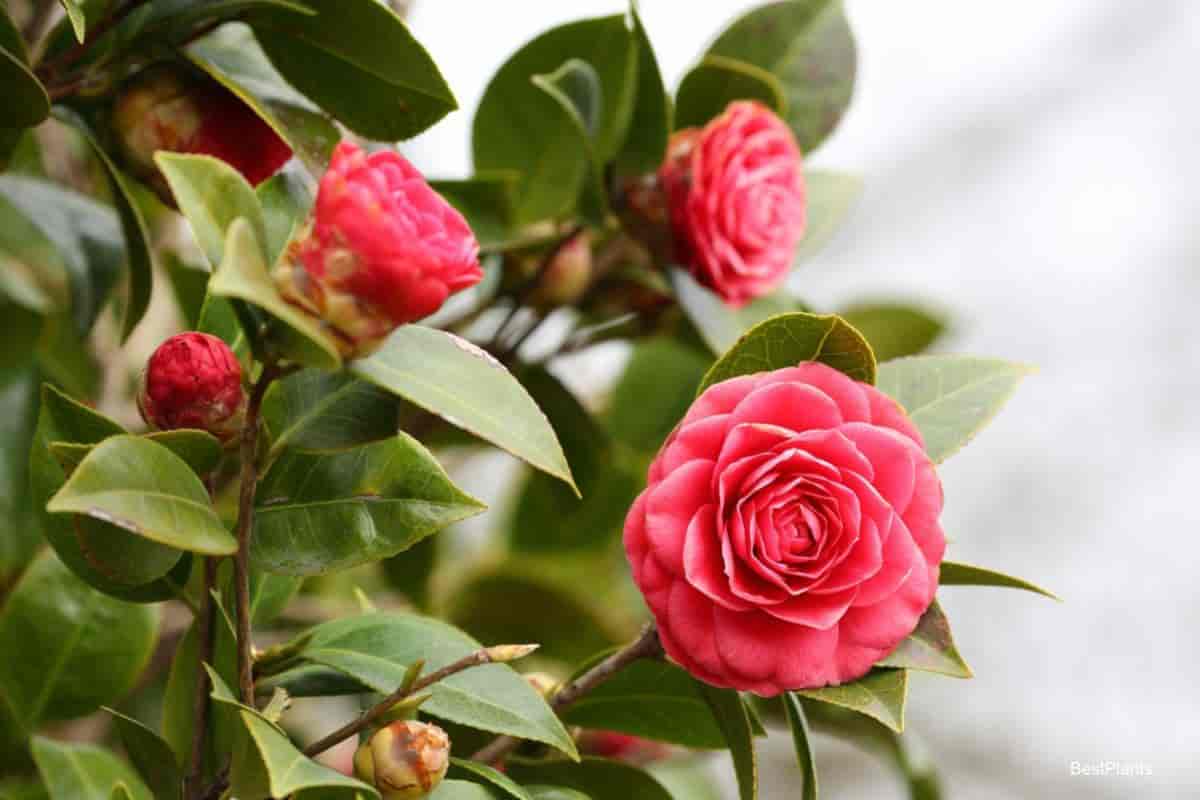Since I live in Springfield, Massachusetts, I suppose I should be fond of hardy plants—they are a logical choice for this part of the country. But there is no accounting for flower preferences, and undeterred by the climate, I decided to grow camellias about five years ago.
At first, tried them in a greenhouse during the winter, but the buds always dropped off. Then I thought of using a 3-foot-deep cold frame, and the results were splendid. My camellias are all I hoped they would be. When they bloom, I am glad I stuck to my resolution to try to raise them every spring.

They usually start to bloom the last of April and continue until June. After danger of frost is past, I bring them out of the coldframe and sink them on the north side of the house near an outside faucet. They get the early morning and late afternoon sun and plenty of water.
Insects On Camellias
To take care of insect problems, I spray the camellias a couple of times during the early part of the summer with Malathion. For fertilizer, I use a mixture recommended by Dr. H. Harold Hume, the camellia expert: 10 pounds ammonium sulfate, 35 pounds acid phosphate, 17 pounds sulfate of potash, 28 pounds cottonseed, and 10 pounds aluminum sulfate.
This will make 100 pounds of fertilizer, but I cut the ingredients accordingly since I use only about 20 pounds. Immediately after blooming and twice more at six-week intervals, I scratch and water the fertilizer into the topsoil—a teaspoon for a 4″ to 6″ inch pot and a tablespoon for an 8″ to 10″ inch pot. I disbud the plants in September, leaving not more than two buds to a stem.
Propagating Camellias
To propagate the camellias, I make cuttings about the last of May that I insert in 6″ inch pots with equal parts of peat moss and sand. In the center of these pots, I place 2 1/2″ inch pots, plug up the drainage holes, and fill them with water which seeps through to the cuttings.
Then I cover the sterns of the cuttings with Roo-tone and place the pots in the shadiest part of the cold frame. It usually takes from the end of May to October 1 to root the cuttings.
I couldn’t get along without the cold frame. It is a standard size: 3′ feet by 6′ feet by 3′ feet deep. Between the stiff frame and an outside wall is a 2″ inch space filled with fiberglass insulation. The insulation is sealed at the top with thin zinc and roofing cement to keep out water.
There are two covers. The upper one consists of two layers of plastic (braced in the middle and topped by 1/4″ inch of wire mesh). The second cover was made the same way but had no mesh.
I made holes at each end of the lower plastic sheet to let condensation out. For drainage, the top cover slants about 3″ inches from the back to the front. I use a metal frame cover with 2″ inch chicken wire to keep dogs and cats out and prevent people from falling in the summer.
Besides carrying camellias and azaleas safely through the winter, my cold frame is lovely for cool-growing plants in the summer. Last summer, I rooted greenhouse mums and poinsettias in it, and I also tucked four orchid plants into the darkest corner where they were entirely at home and did very well.
41348 by Charles O. Dean
